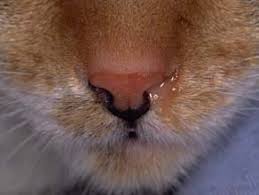Are you a cat owner who has noticed your furry friend sneezing, sniffling, or having difficulty breathing? Your kitten or cat may be suffering from nasopharyngeal polyps, a common condition that can affect their quality of life. In this blog post, we will explore everything you need to know about nasopharyngeal polyps in kittens and cats, including symptoms and treatment options.
What are Nasopharyngeal Polyps?
Nasopharyngeal polyps are non-cancerous growths that can develop in the upper respiratory tract of kittens and cats. These polyps typically originate in the middle ear and can extend into the nasal cavity, pharynx, or even the Eustachian tube. While the exact cause of nasopharyngeal polyps is unknown, they are believed to be related to chronic inflammation or infections in the upper respiratory tract.
Symptoms of Nasopharyngeal Polyps
If your kitten or cat is suffering from nasopharyngeal polyps, you may notice symptoms such as sneezing, sniffling, nasal discharge, difficulty breathing, or even a change in their voice. In some cases, cats may also exhibit signs of ear infections, head shaking, or a tilted head. If you observe any of these symptoms in your furry friend, it is essential to consult with your veterinarian for a proper diagnosis and treatment plan.
Diagnosing Nasopharyngeal Polyps
To diagnose nasopharyngeal polyps in kittens and cats, your veterinarian may perform a physical examination, including a thorough inspection of the ears, nose, and throat. In some cases, imaging tests such as X-rays or CT scans may be necessary to visualize the polyps and determine their size and location. Additionally, your veterinarian may recommend a biopsy to confirm the diagnosis and rule out other potential causes of your cat’s symptoms.
Treatment Options for Nasopharyngeal Polyps
The treatment of nasopharyngeal polyps in kittens and cats typically involves surgical removal of the growths. Depending on the size and location of the polyps, your veterinarian may recommend either a traditional surgical approach or a minimally invasive procedure such as endoscopy. In some cases, multiple surgeries may be necessary to completely remove the polyps and prevent recurrence.
Post-Operative Care and Prognosis
After surgery to remove nasopharyngeal polyps, your kitten or cat will require post-operative care to ensure a smooth recovery. This may include pain management, antibiotics to prevent infection, and monitoring for any signs of complications. With proper care and follow-up appointments with your veterinarian, most cats have a good prognosis after surgical removal of nasopharyngeal polyps.
Preventing Nasopharyngeal Polyps
While the exact cause of nasopharyngeal polyps in kittens and cats is unknown, there are some steps you can take to help prevent this condition. Keeping your cat’s ears clean, maintaining good oral hygiene, and providing a balanced diet can help reduce the risk of chronic inflammation or infections that may contribute to the development of polyps. Additionally, regular veterinary check-ups can help detect any potential issues early on and ensure your furry friend’s overall health and well-being.
In conclusion, nasopharyngeal polyps are a common condition that can affect kittens and cats, causing symptoms such as sneezing, sniffling, and difficulty breathing. If you suspect that your furry friend may be suffering from nasopharyngeal polyps, it is essential to consult with your veterinarian for a proper diagnosis and treatment plan. With prompt intervention and appropriate care, most cats can recover well after surgical removal of these growths. Remember to prioritize your cat’s health and well-being by staying informed and proactive about their medical needs.

